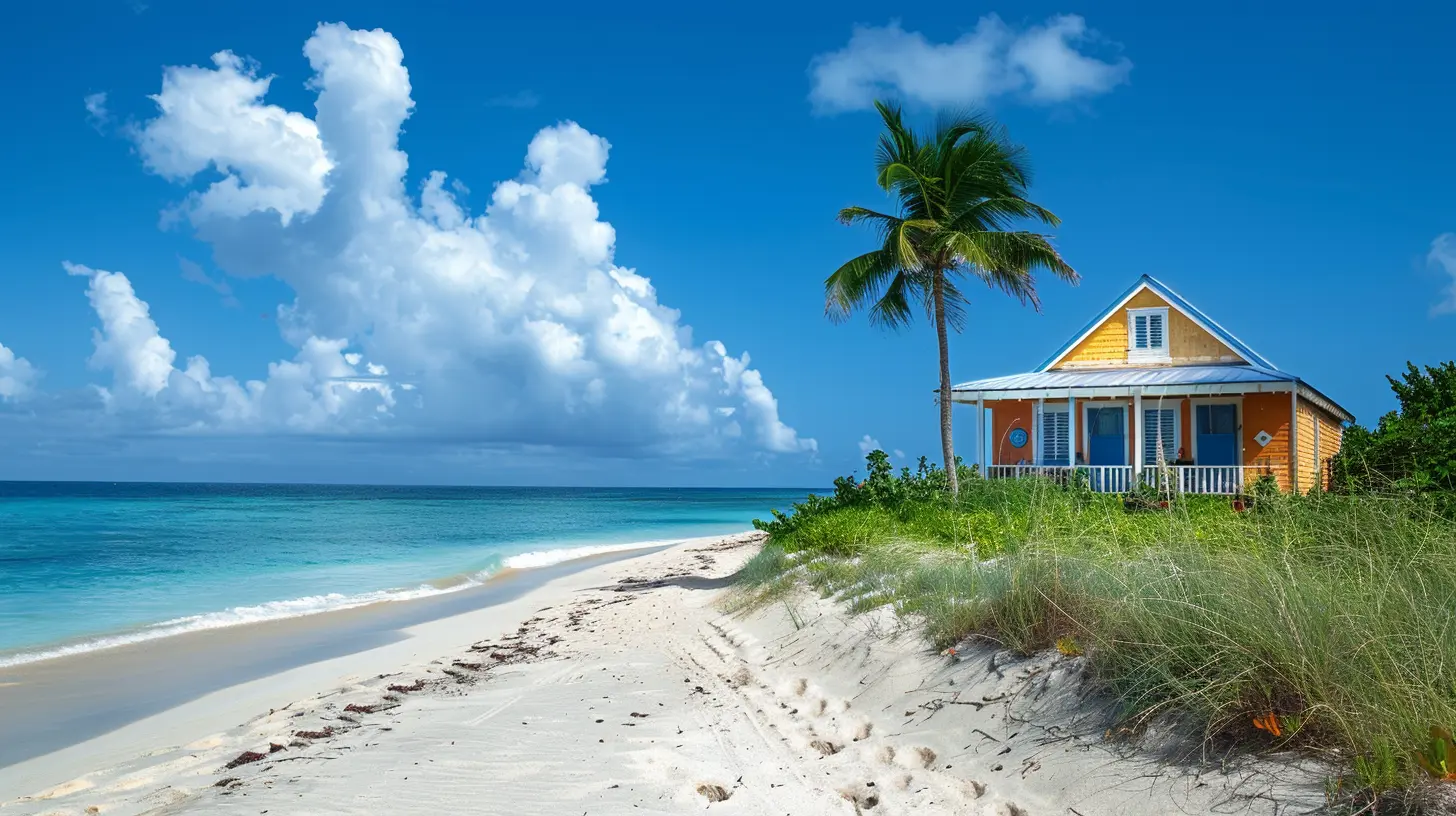Tips for Choosing the Right Mortgage Lender for Vacation Homes
1 July 2025
So, you've decided to buy a vacation home—exciting, right? Whether it's that dreamy beach house or a cozy mountain cabin, nothing beats the feeling of having your own getaway retreat. But before you start planning weekend barbecues or winter ski trips, there’s a crucial step you need to tackle first: finding the right mortgage lender.
Now, I know what you're thinking—mortgages aren’t exactly a hot topic for dinner conversations. But trust me, picking the right lender can make or break your vacation home purchase. So, let’s break it down in a fun, easy-to-digest way and help you land the best mortgage deal for your second home!

1. Understand the Different Mortgage Options
Not all mortgages are created equal, especially when it comes to vacation homes. You’ve got a few options to choose from, and knowing the differences can save you a ton of headaches (and money) down the road.Primary vs. Secondary Home Loans
Lenders classify mortgages differently based on how you'll use the home. Since your vacation home isn’t your primary residence, it falls under the secondary home category. This means interest rates can be slightly higher, and you'll need to meet stricter qualification requirements.Fixed-Rate vs. Adjustable-Rate Mortgages (ARM)
- Fixed-Rate Mortgage – Your interest rate stays the same throughout the loan term. Great for those who want predictability in their monthly payments.- Adjustable-Rate Mortgage (ARM) – Starts with a lower interest rate that adjusts periodically. A solid option if you plan on keeping the home for a shorter period.
Jumbo Loans
Since vacation homes tend to be in high-value areas, you might need a jumbo loan, which covers amounts beyond conforming loan limits. These loans often have stricter credit and down payment requirements.
2. Check the Lender’s Experience with Vacation Homes
Not every lender specializes in financing vacation homes, and choosing one who does can make your life MUCH easier. Think of it like hiring a fishing guide—sure, you could go with someone who kind of knows the waters, or you could pick an expert who guarantees you’ll reel in the big one.Look for lenders who:
✅ Offer specific loan programs for vacation homes
✅ Understand local market conditions
✅ Can navigate unique rental or seasonal home financing challenges

3. Compare Interest Rates and Loan Terms
When shopping for a mortgage lender, don’t just settle for the first offer thrown your way. Different lenders offer different interest rates, fees, and loan terms—it’s like finding the best deal on airline tickets; a little research can save you thousands!How to Compare Offers Effectively:
- Get multiple quotes – Reach out to at least three lenders to compare rates and terms.- Check APR (Annual Percentage Rate) – This gives you a full picture of loan costs, including fees.
- Look at loan conditions – Lower rates may come with hidden fees or restrictive terms, so read the fine print!

4. Consider Local vs. National Lenders
Choosing between a local lender and a big-name national bank is like deciding between a boutique coffee shop and Starbucks—each has its perks.- Local Lenders often have better knowledge of the area’s real estate market and may be more flexible with lending terms.
- National Banks typically offer more loan options and competitive interest rates but can be less personalized in their service.
5. Read Reviews and Ask for Referrals
Picture this: You’re picking a vacation spot. Do you just book blindly, or do you check reviews first? Exactly! The same goes for mortgage lenders.What to look for in lender reviews:
- Are customers happy with their loan process?
- Were there hidden fees or last-minute surprises?
- How was their customer service?
Better yet, ask for referrals from people in your network who have purchased vacation homes. Nothing beats firsthand experience!
6. Evaluate Customer Service and Communication
Ever been ghosted by a company’s customer service? Super frustrating, right? Now imagine that happening with your mortgage lender—it’s a nightmare you don’t want to experience.A good lender should be:
- Responsive and transparent – No dodging questions or vague answers.
- Easy to reach – Whether by phone, email, or in-person, they should be available when you need them.
- Helpful and patient – You shouldn’t feel rushed or pressured into anything.
7. Understand Down Payment and Credit Score Requirements
Vacation home loans typically require higher down payments and stronger credit scores than primary home loans. So, before you start dreaming about sipping margaritas on your beachside porch, let’s talk numbers.- Down Payment: Expect to put down at least 10-20% (sometimes more for jumbo loans).
- Credit Score: A score of 680 or higher is usually required, but the higher, the better for securing low rates.
- Debt-to-Income Ratio (DTI): Lenders typically want a DTI below 43%, meaning your debts (including the new mortgage) shouldn’t eat up too much of your income.
8. Ask About Additional Costs and Fees
Buying a vacation home isn’t just about the mortgage payment; there are plenty of extra costs that can sneak up on you.Some important fees to look out for:
- Closing costs (typically 2-5% of the loan amount)
- Property taxes (varies by location)
- Private Mortgage Insurance (PMI) if you put down less than 20%
- HOA fees (if your vacation home is in a community or resort area)
Make sure your lender gives you a Loan Estimate, which outlines all costs upfront. No one likes surprise fees!
9. Plan for Rental Property Financing (If Applicable)
Thinking about renting out your vacation home when you're not using it? That’s a great way to offset costs! However, this can affect your mortgage options.Some lenders don’t allow vacation homes to be used as rental properties, while others require specific loan programs. Be upfront about your plans so you get the right financing from the start!
10. Lock in Your Interest Rate at the Right Time
Mortgage rates fluctuate like gas prices—they can change daily based on market conditions. If you find a great interest rate, consider locking it in to avoid surprises before closing.Most lenders offer rate locks for 30 to 60 days, but some provide longer options for an added fee. Timing it right can save you thousands over the life of your loan!
Final Thoughts
Buying a vacation home is a BIG deal, and choosing the right mortgage lender is just as important as picking the perfect location. Taking the time to research and compare lenders will give you peace of mind (and possibly save you a chunk of cash).Remember to:
✔ Know your mortgage options
✔ Compare rates and loan terms
✔ Choose a lender experienced in vacation home loans
✔ Read reviews and check customer service quality
✔ Understand your down payment, credit score, and additional costs
With these tips in mind, you’re one step closer to landing a great mortgage and getting the keys to your dream getaway. Now, all that’s left is deciding whether you want a mountain escape, a lakeside retreat, or a beachfront paradise. Tough choice, right?
all images in this post were generated using AI tools
Category:
Mortgage TipsAuthor:

Camila King
Discussion
rate this article
2 comments
Ulysses Long
Consider lender reputation and flexibility; both are crucial for vacation home financing.
November 11, 2025 at 12:49 PM

Camila King
Absolutely, lender reputation and flexibility are essential factors to ensure a smooth financing process for your vacation home.
Arwen McLean
When choosing a mortgage lender for vacation homes, prioritize transparency, competitive rates, and strong customer support for a smooth experience.
July 7, 2025 at 7:33 PM

Camila King
Thank you for the valuable insights! Transparency, competitive rates, and excellent customer support are indeed crucial factors in selecting the right mortgage lender for vacation homes.


